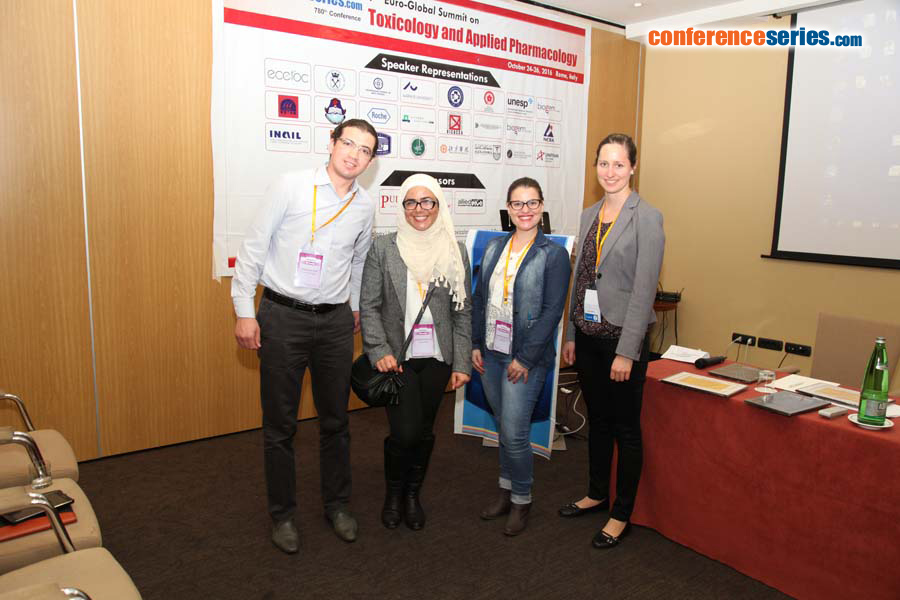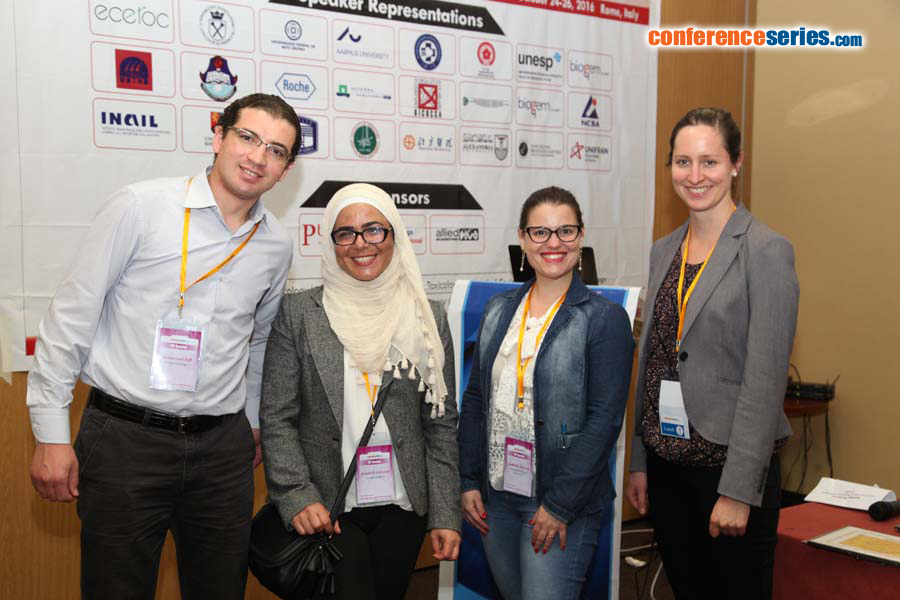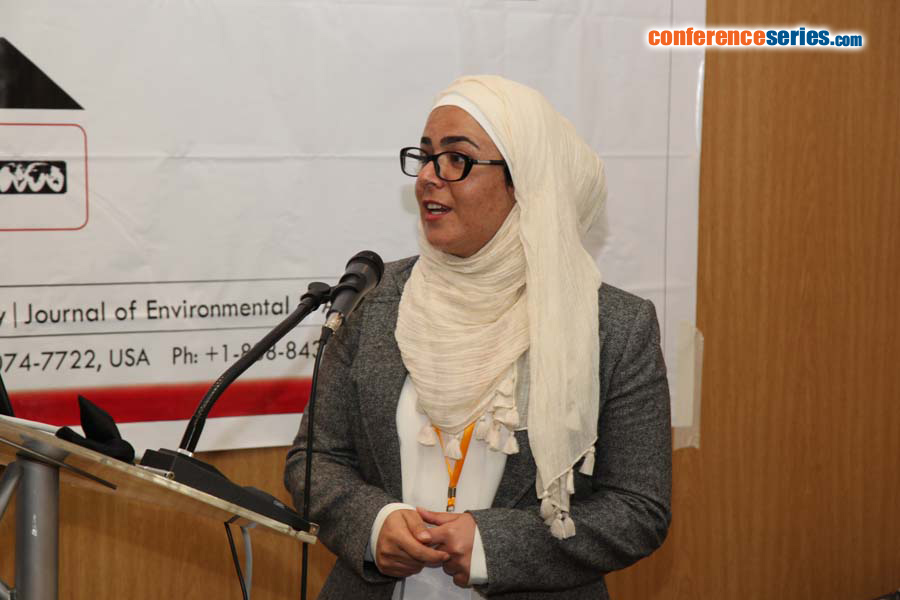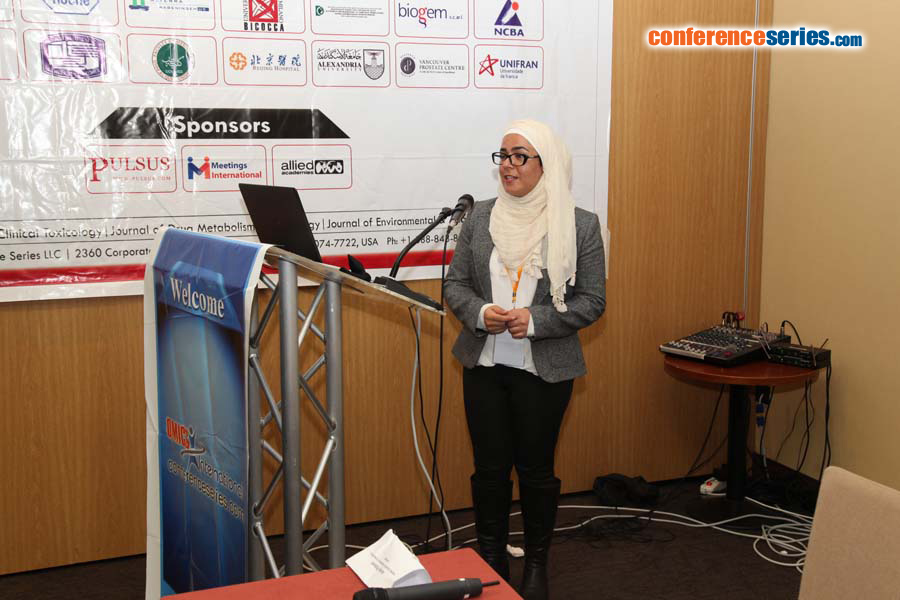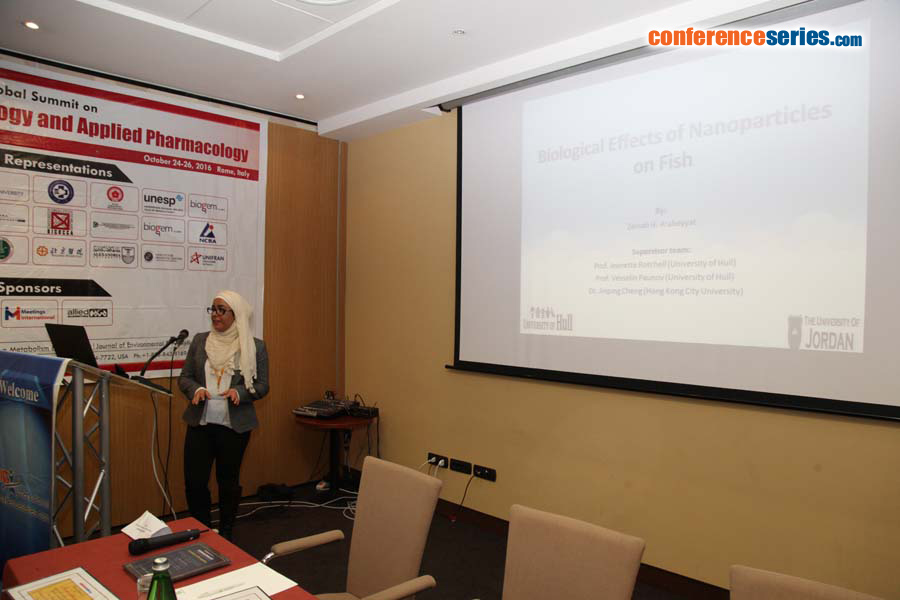Biography
Biography: Zeinab H Arabeyyat
Abstract
It is important to develop early warning tools of nanoparticle-induced biological eff ects for aquatic species to be able to monitor any possible impacts. In this study, early zebrafi sh (Danio rerio) embryos have been experimentally exposed in vitro to 1.925 mg/L of 4 nm, 10 nm AgNPs and to silver ions (0.018 mg/L) alone, up to 96 hpf. Five targeted genes have been
employed for analysis: Peroxisomal membrane protein 2 (Pxmp 2), hypoxia inducible factor (HIF), superoxide dismutase (SOD), mucosal secretion protein (Muc) and catalase (CAT) genes. A global approach employing suppression subtractive hybridization (SSH) has also been used in parallel to identify novel genes that may be involved in the fi sh embryo response as a result of exposure to nanoparticles. Th e results show that 4 nm AgNPs are taken up by zebrafi sh embryos at a concentration of 1.925 mg/L. AgNP uptake resulted in signifi cantly up-regulated Pxmp 2 and HIF mRNA transcript levels in exposed embryos. An increased trend in up-regulation of SOD was also observed, while, Muc and CAT remained unchanged. No corresponding significant differences were observed in any of the transcript levels analyzed following exposure to larger sized 10 nm AgNPs or silver ion exposure alone. An up-regulation of solute carrier family 25, membrane 5 and Cytochrome c oxidase subunit I; and down-regulation of spermatogenesis associated protein 2 and Actin alpha, cardiac muscle lb mRNA expressions identified by SSH approach have also been observed. Th ese results suggest that 4 nm AgNPs are available for uptake and, as a result cause changes in mRNA expression in developing embryos.


